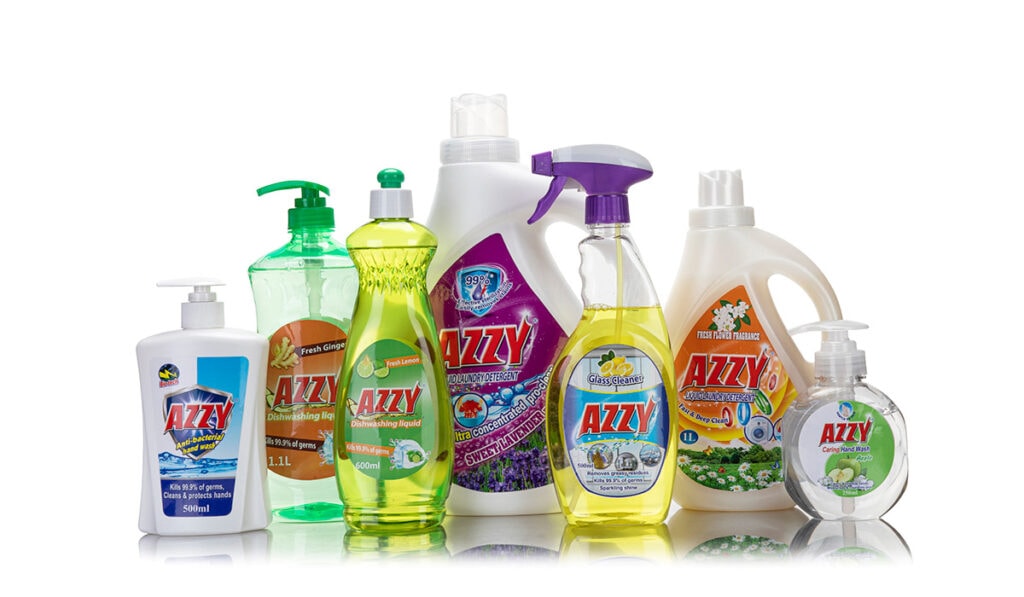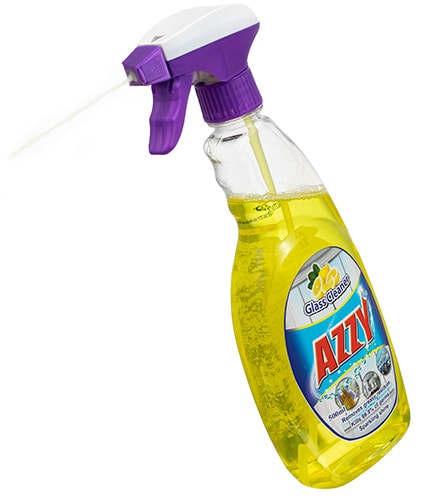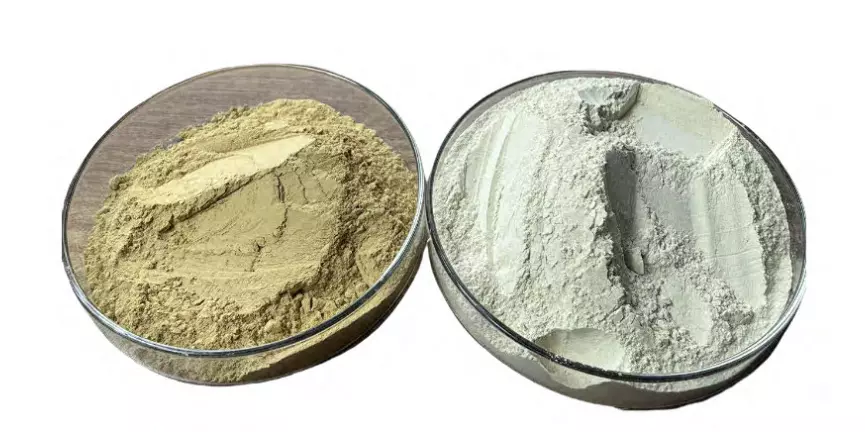Glass Cleaners: Introduction
Glass cleaner belongs to one of the subclasses of household cleaners. This broad category encompasses many of the widely purchased consumer products, in an extremely diverse range. It includes a variety of items from general-purpose cleaners to specialized solutions, such as glass cleaners or tub and tile cleaners.
The ingredients found in this class of products are also diverse, ranging from simple soaps to proprietary formulations of petrochemical surfactants, solvents, and complexing agents.
While the volume of household cleaners used may be lower than other chemical products, yet with more serious impacts on the environment – everyone can have a positive impact on the environment by purchasing household cleaners with superior environmental attributes.
Manufacturers of household cleaners have always had to keep three – sometimes conflicting -goals in mind: the performance of the product, the safety of the ingredients for users, and the costs of the raw materials. Recently, a fourth goal has been added, as a result of the high consumer demands: reducing impacts upon the environment. Given the diversity of the cleaners, the number of components, and the difficulty in understanding the entire life cycle of multi-ingredient formulations, it is not surprising that different manufacturers have different definitions of household cleaners.
Classification of Household Cleaners
Household cleaners are divided into subclasses by uses and by composition. These include:
- General-purpose cleaners
- Disinfectants
- Scouring cleansers
- Glass cleaners
- Carpet/upholstery cleaners
- Spot/stain removers
- Toilet bowl cleaners
- Automatic toilet cleaners

Classification by Product Use
This category includes general-purpose cleaners, as well as some solutions designed for specific purposes (glass cleaners, toilet bowl cleaners, carpet cleaners, and spot removers).
A few types of cleaners classified by use are also divided into subgroups. For instance, scouring cleansers are separated into a variety of bathroom cleaners. Similarly, toilet bowl cleaners are divided into manual and automatic cleaners. Their use and formulations can be quite different, but these categories could be combined if desired.
General Purpose Cleaners
Surface cleaners labeled as “multipurpose,” or clearly intended for use in a variety of applications in the home.
Example: Multi-purpose spray cleaners, floor or wall cleaners, disinfecting cleaners, cleaner-degreasers, concentrated cleaners.
Bathroom Cleaners
Cleaners intended primarily for use on bathroom surfaces, labeled as bathroom cleaners, or which mention specific bathroom surfaces.
Example: Tub and tile cleaners, mildew stain removers, shower cleaners, disinfecting bathroom cleaners.
Disinfectants (Disinfecting Cleaners Excluded)
Products that disinfect surfaces but not necessarily clean them at the same time.
Example: Liquid, spray, or concentrated germicides
Scouring Cleansers
Surface cleaners featuring an abrasive.
Example: Scouring powders, scouring pastes or liquids.
Glass Cleaners
Cleaners formulated specifically for use on glass.
Example: Pump spray, aerosol, or liquid glass cleaners.

Carpet/Upholstery Cleaners
Cleaners specifically formulated for use on fabrics, which cannot be removed for laundering or dry-cleaning.
Example: Liquids, foams, or dry powders, including products for use in rental machines.
Spot/Stain Removers
Products designed for removing spots, excluding bleaches.
Example: Cleaning fluids, stain sticks, enzyme spot removers.
Toilet Bowl Cleaners
Products designed specifically to clean the toilet bowl and which have no intended other use.
Example: Liquid or crystal acid-based cleaners, detergent cleaners.
Automatic Toilet Cleaners
Products created for placing inside the toilet tank, which drip or dissolve, providing continuous cleaning of the bowl.
Example: Blocks, tablets, controlled release bottles.
Classification by Ingredients
There are five general types of ingredients found in household cleaners:
- Surfactants
- Builders
- Solvents
- Antimicrobials
- Miscellaneous
Surfactants, or surface-active ingredients, are the wetting and foaming agents which form the basis for most aqueous cleaners. While anionic, nonionic, and amphoteric surfactants are used mainly for cleaning, cationic surfactants are often used as antimicrobials.
Builders include a range of both organic and inorganic chemicals whose function is to improve the performance of the surfactants. Their role is to adjust or maintain the pH of the washing solution; soften water by removing calcium and other metal ions; and boost, reduce, or maintain foam height.
Solvents are added to help dissolve oil and grease. Antimicrobials are pesticides that kill bacteria, fungus, or mildew on surfaces. Sometimes the same materials are used in smaller amounts as preservatives.
All other ingredients have been placed in the category called miscellaneous. This category includes abrasives, fragrances, dyes, thickeners, hydrotropes (substances that keep a mixture from separating), preservatives, and anything else.
From the above-listed details, we can see the typical formula and production methods of glass cleaners. Proportions, additional components, fragrances, and colors belong to fine-tuning in the creation of specific products.
Glass Cleaners
Glass cleaner is one of the subclasses of household cleaners. Manufacturers use a variety of chemical ingredients to compose their own glass cleaner’s formula, distinguished by the cleaning strength, mild, wetting agent, and performance additives.

Chemicals in Glass Cleaner
Surfactants
Chemicals that molecularly surround contaminants and break their hold or bond on glass surfaces.
- Anionic Surfactants
- Nonionic Surfactants
- Amphoteric Surfactants
- Alkyl Polyglucosides
- Special Products
- Surfactant Systems
- Performance Additives
Solvents
Chemicals that molecularly attack and destroy contaminants. Solvents create
chemical reactions that dissolve dirt, fat, grease, or mineral compounds and make them
disappear from dirty surfaces. These properties lead to effective window cleaning.
Other Additives
- Dye: a coloring agent
- Fragrances: odor-enhancing agents
- Preservatives
Typical Formula for Glass Cleaner
Most of the specific brands of glass cleaners are liquids dispensed from pump spray bottles. A few of them are aerosols, propelled by means of propane or other flammable hydrocarbons. Finally, the third type of product is a pre moistened towelette.
Among those, we see the typical formula for liquids.
The major ingredient in liquid glass cleaners is water. Almost all of the glass cleaners contain glycol ethers, usually ethylene glycol monobutyl ether. Alcohol, such as isopropanol, is also commonly found, as well as ammonia.
A few products contain vinegar or lemon juice as an alternative to ammonia; however, it is important to note that these products may still contain glycol ethers. Aerosol formulations are similar except for the inclusion of a propellant gas – usually propane or isobutane. For the towelettes, the liquid used to moisten them is similar in composition to the usual glass cleaners.
Table 1. A typical formula for glass cleaner
| S/N | Ingredient | % |
| 1 | Butoxy ethanol | 3-5% |
| 2 | Alcohol | 5-20% |
| 3 | Surfactant | 0.2-5% |
| 4 | Antistatic additives | 0.5-3% |
| 5 | Performance additives | 0.1-1% |
| 6 | Blue color | 0.1% |
| 7 | Lemon fragrance | 0.2% |
| 8 | Water | Balance |
| pH | 6.5- 10 |
Production Methods
The manufacturing of glass cleaners is not very complicated. A reliable, tested and proven formula is a necessity, as well as raw materials and a mixing tank. Precise measurement of and ingredients usage rankings are the first step, and after that their mixing is conducted in the listed order.




